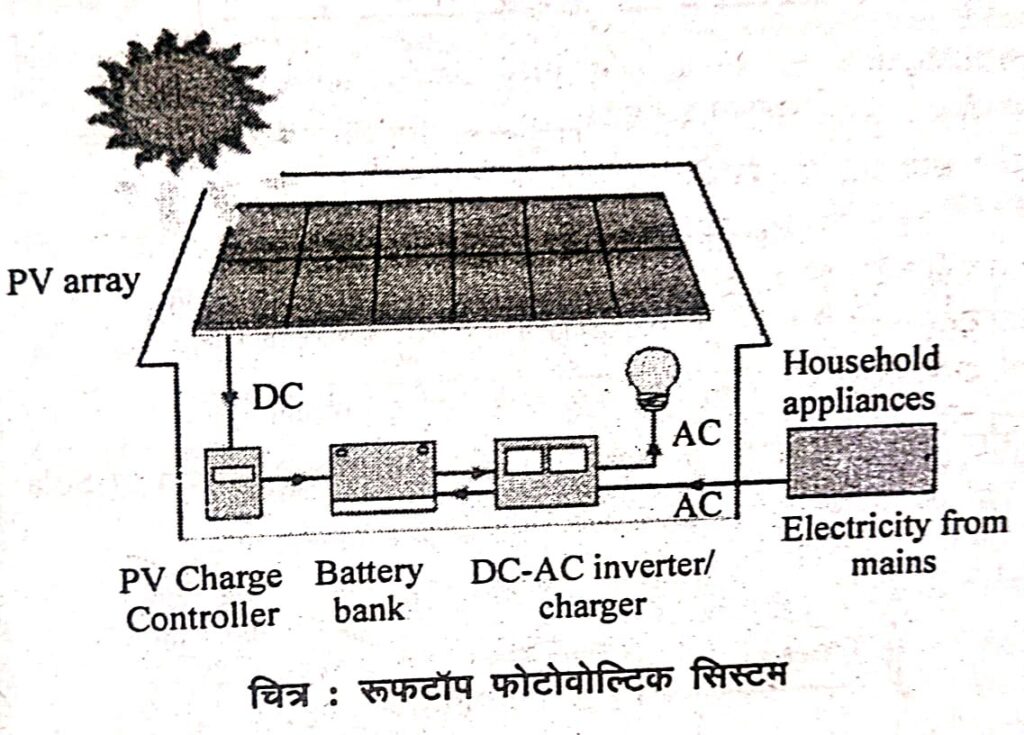Friends, today in this article we will learn about the rooftop power system. I am going to give you information about all this in a very good way. So let’s start.
Rooftop Power System
A rooftop solar photovoltaic power system, or rooftop PV system, is a photovoltaic (PV) system that consists of electricity-producing solar panels installed on the roof of a residential or commercial building. The various components of such a system include mounting systems, cables, solar inverters, solar panels, and other electrical accessories.
Rooftop mounted systems are smaller than ground mounted photovoltaic power stations, with power in the megawatt range. Most rooftop PV systems in developed countries are grid-connected photovoltaic power systems. Rooftop PV systems on residential buildings typically have capacities of about 5 to 20 kilowatts (kW), while power systems mounted on commercial buildings often range from 100 kilowatts to 1 megawatt.
Components of a Rooftop Solar System
- Solar Panels – Solar panels produce carbon-free electricity when irradiated by sunlight. Solar panels, often made of silicon, are made up of small solar cells, usually six per panel. Several solar panels connected together make up one solar cell. Solar cells are usually covered by tempered glass and protected by an aluminum frame. The front of the solar panel is very strong while the back of the panel is usually a bit weaker.
- Mounting Clamps – Mounting clamps typically consist of aluminum brackets and stainless steel bolts that secure the panels to the roof.
- Racking – Racking, or rails, are made of metal and are often in a parallel configuration on the roof. It is important that the rails are level enough for the panels to be mounted evenly.
- Mount Design – Mount designs sometimes vary due to the wide range of roof configurations and materials.
- Flashing – Flashing is a durable metal plate that provides a water resistant seal between the mount and the roof surface.
- DC/AC Wiring – DC/AC wiring for the inverter connects wires between panels and to a micro inverter or string inverter. To avoid weathering and damage to cables, make sure the cables do not touch the roof surface.
- Micro Inverters – Micro inverters are installed below the panels and convert the DC power from the panels into AC power which can be sent to the grid.

What did you learn today :-
Now you must have known about Rooftop Power System and you must have got the answer to all these questions very well.
I hope you liked the information given by me, if you have any question/suggestion in your mind, then you can tell me by commenting below, I will definitely reply to your comment. If you liked this post, then you can also share it with your friends and relatives.
